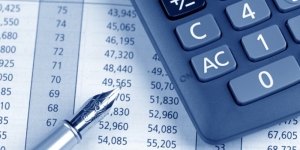Ready to take charge of your finances? The first step begins with wanting to change your relationship with your money and creating a plan for the future. Not having a plan for your money is like signing up for a fishing competition without a fishing pole! You may get a fish, but it won't be easy.
If you want to track and manage your finances effectively, you need to use every tool in your toolkit. This includes budgeting apps, automated savings, and more.
1. Make the Most of Budgeting Apps
Let's face it, the digital age is the future! Budgeting apps can be so much more effective than paper budgeting or envelope budgeting. Nearly two-thirds of Americans use a financial app on their phone and 55% of Americans bank online. If you prefer a more hands-off approach to budgeting, a mobile app can be the best tool to use as a consumer. With a budgeting app, you're allowed to connect your bank account(s) and track your spending each month. Some apps can even track your spending by category and break it down for you! It's a simple way to see where you are overspending each month and plan for ways to cut back.
In some cases, you may have a big grocery bill every month. Let's say the app told you that you spent $1,500 on food in the last month and you are a family of 2. That's a lot for just two people, but if you factor in eating out and DoorDash, it can add up quickly. Try to shop generically at the grocery store when you can and avoid eating out as much as possible!
The app may even be able to offer you suggestions for cutting back, and in some cases, cancel subscriptions for you. That's the main selling point of apps like RocketMoney! The app can find random subscriptions that you didn't even know you were paying for and cancel them on your behalf.
2. Check Your Bank Statements Regularly
Even if you have a mobile budgeting app, you should still check your bank statements regularly to make sure that there are no fraudulent or duplicate charges on there! While you don't need to check your bank statements every single day, make sure you pop in to your banking app once a month at the very least to see what your finances look like.
Reading your bank statement can be simple. Your statement is essentially a summary of your bank account's activity throughout the month and records transaction details, including:
- Starting Balance at the Beginning of The Month
- Withdrawals, Transfers, Etc.
- Deposits and Cashed checks
- Any Fees Charged to the Account or Interest That the Account Earned
Your statement will always include your statement cycle, along with your information, your banking information, and the transaction dates. If you have any questions about what's on your bank statements, make sure to contact your bank directly! You can often set up fraud alerts or overdraft protection to ensure that you are as protected and secure as possible when banking online.
3. Automate Your Retirement and Savings
You can approach your savings and retirement goals with two different approaches: automatic saving or sporadic saving. With automatic saving, you will allow a portion of each paycheck (assuming you are paid bi-weekly) to be automatically sent to a savings account and / or a retirement account. With this approach, you do not have to rely on any manual action on your part, but it does mean that your paycheck will be a little bit less each month.
With sporadic saving, you essentially dump lump sums into your accounts as you are able to throughout the year. But, keep in mind that in 2025, the most you can contribute to a Roth 401(k), a traditional 401(k), or a combination of both accounts is $23,500. Depending on your age, you may be allowed to contribute more than the standard allotted amount.
Regardless of which method you choose, make sure to pick a high-yield savings account to maximize your money as much as possible! However, automating your savings and retirement means that you can more easily budget for your money each month. This can make tracking and managing your finances a lot easier!
4. Divide Your Expenses and Conquer Your Finances
Some financial experts like to recommend creating two separate bank accounts for different types of expenses. The first bank account can be for expenses that do not change each month, such as your mortgage payment, car loan, car title loan, etc. The second bank account should be for variable expenses that tend to vary from month to month, like utility bills, credit card statements, and other personal expenses. If you have a spouse, you can both divide and conquer together! Try to approach your money as a unit instead of independently from one another. One of your bank accounts will handle the fixed expenses, and the other will handle the variable expenses. Together, you can set up your accounts to handle separate expenses and budget accordingly.
5. Pay off Your Debt and Consider Consolidating
Another tool to consider when tracking and managing your finances is your debt. Creating a plan for your money often includes creating a strategy to effectively manage your debt obligations. If more than 30% of your income is dedicated to paying off your debt, you may want to look into a consolidation loan from a local title loan place. Otherwise, some of the strategies you can consider to pay off your debt include the debt snowball strategy or the avalanche strategy! You may be able to even get a balance transfer credit card and take advantage of the 0% APR introductory rate while you prioritize paying off your credit card debt.
Don't Be Afraid to Start Over
The last tip for tracking and managing your money is that you shouldn't be afraid to start over! If you can't stick to your budget right away, don't stress about it- it's ok to start over and create a new one from scratch! A fresh budget with different terms and conditions can be the answer to your inability to stick with your current one. In some cases, having a stricter budget is not always the best idea. Restricting yourself from basic things like entertainment or restaurants can lead to overspending in other areas to make up for it. If you need a sweet treat once a week or an occasional date night, it's ok to have a little bit of wiggle room in your budget for non-necessities.
So if you're having trouble following your current budget, scrap it and start over! Giving yourself grace is another important tool to healing your relationship with money when you're trying to manage your finances. The most important plan to follow is the one that you set for yourself. Only you can manage your expectations and your relationship with money. The more you decide to invest in yourself and change your habits, the more you will get out of using these tools to track and manage your finances!






